Pallet Inverter: Can You Automate Pallet Rotations at PCB Assembly Stations?
Handling heavy pallets loaded with delicate Printed Circuit Boards (PCBs) is a constant source of anxiety on the assembly floor. The process is slow, physically demanding, and one small mistake can lead to thousands of dollars in damaged components. You've invested heavily in high-speed SMT lines and automated inspection, yet this manual, high-risk bottleneck remains, holding back your entire operation's efficiency and threatening your bottom line. I've seen this exact problem in countless factories. It's a frustrating situation where a low-tech problem undermines a high-tech process. But what if you could remove this manual step entirely, making it as seamless and automated as the rest of your line?
Yes, you can absolutely automate pallet rotations at PCB assembly stations. This is precisely what a pallet inverter is designed for. It is a specialized machine that securely clamps, rotates, and transfers entire pallet loads, eliminating manual handling, preventing product damage, and integrating directly into an automated production flow.
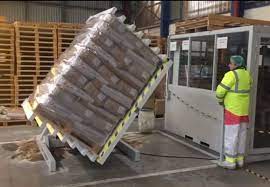
For a long time, I've preached the value of finding the right tool for the job. In my early days as an engineer, I saw teams using brute force and makeshift solutions for problems that had elegant, engineered answers. Automating pallet rotation isn't just a luxury; it's a strategic move. It addresses critical issues of safety, quality control, and production speed head-on. Now that you know a solution exists, let's break down exactly how it works and what it can mean for your operation. We will explore the mechanics, the financial returns, and how this equipment fits into a modern, data-driven factory.
How does a pallet inverter actually work in a PCB assembly line?
You see a pallet loaded with freshly assembled, high-value PCBs that needs to be flipped for the next stage of production. The thought of doing this manually is stressful. How do you ensure the load doesn't shift? How do you prevent a catastrophic drop? It seems like a complex dance of forces and balance. This manual process is an island of inefficiency and risk in your sea of automation. The solution is a machine that performs this task with mechanical precision, using a simple, robust principle to take the guesswork and danger out of the equation.
A pallet inverter works by using a dual-clamping system. It gently secures the load from both the top and bottom, lifts the entire assembly, rotates it 180 degrees around a central axis, and then lowers it back down. At this point, the original pallet is now on top, ready to be easily removed and replaced. The entire process is controlled, smooth, and takes about a minute.
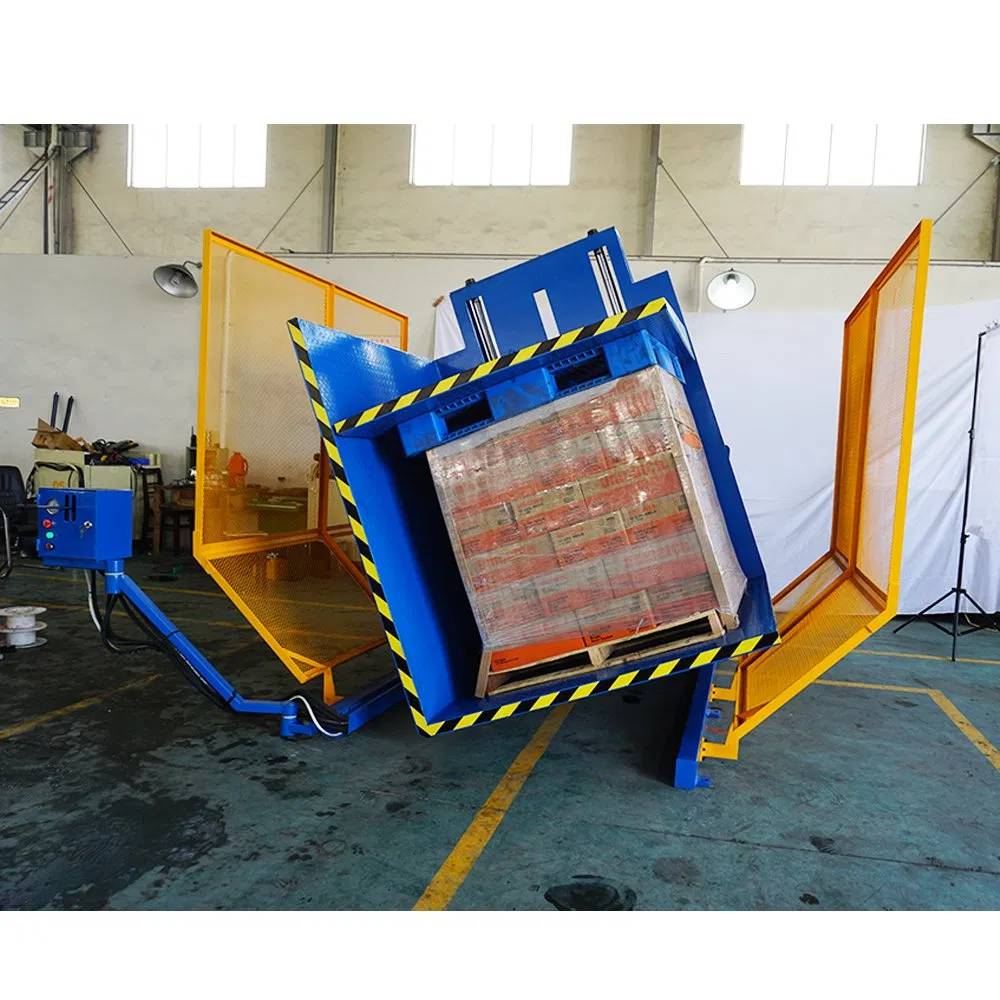
Let's dive deeper into the core components that make this possible. The technology isn't magic; it's solid engineering designed for reliability and safety. Understanding these mechanisms will help you appreciate how it can be adapted for a sensitive application like PCB handling.
The Clamping System: A Firm but Gentle Grip
The heart of the inverter is its clamping mechanism. This isn't just a simple vise. For handling delicate PCBs, the clamping platens are often coated with non-marking, high-friction materials like rubber or specialized polymers. This prevents any cosmetic damage to the boxes or totes. More importantly, the system uses adjustable pressure control. Sensors monitor the clamping force to ensure it's just enough to hold the load securely without crushing the contents. This is critical. You can set the pressure based on the load's weight and fragility. I remember a client who handled both rugged power supplies and fragile display panels. The ability to program different clamping pressures for each product was a game-changer for them, eliminating damage completely.
The Rotation Mechanism: Controlled and Smooth
Once clamped, the load is rotated. Most inverters use either a hydraulic or an electric motor system.
- Hydraulic systems are powerful and robust, ideal for very heavy loads. They provide consistent torque throughout the rotation.
- Electric systems offer more precise control over speed and positioning. They can be programmed with soft-start and soft-stop profiles, which means the rotation begins and ends slowly, with a faster speed in the middle. This smooth acceleration and deceleration is vital for preventing the layers of PCBs from shifting inside their packaging. The goal is to rotate the load without any internal G-forces that could dislodge components.
Integration and Control Logic
A modern pallet inverter doesn't operate in isolation. It is controlled by a Programmable Logic Controller (PLC), the same type of industrial computer that runs the rest of your automated line. This PLC manages the entire sequence: clamp, lift, rotate, lower, unclamp. It also monitors all the safety features. These include light curtains that stop the machine if someone enters the operating area, pressure sensors, and physical guards. This level of control allows the inverter to be integrated seamlessly with conveyors. A pallet can arrive on an in-feed conveyor, be automatically inverted, and then exit on an out-feed conveyor without a human ever touching it.
| Feature | Hydraulic System | Electric System | My Recommendation for PCBs |
|---|---|---|---|
| Power | Very high, for heavy-duty loads | High, suitable for most loads | Electric is sufficient and preferred. |
| Control | Good, but less precise | Excellent, with programmable speed | Electric offers the necessary "soft" handling. |
| Maintenance | Requires hose and fluid checks | Lower maintenance, fewer leak points | Electric is cleaner and easier to maintain. |
| Environment | Risk of hydraulic fluid leaks | Clean operation, no fluid risks | Electric is essential for cleanroom environments. |
| Cost | Generally lower initial cost | Higher initial cost | The extra cost is justified by precision and cleanliness. |
What are the direct ROI and cost savings of automating pallet rotation?
Every capital investment has to pass a simple test: will it make or save the company more money than it costs? You look at a pallet inverter, and you see a price tag. But I encourage my clients to look beyond that. I ask them to calculate the hidden costs of not having one. The costs of manual labor, product damage, and production bottlenecks are real, and they add up every single day. The solution is to quantify these ongoing costs and see how quickly an investment in automation can pay for itself.
The direct Return on Investment (ROI) from a pallet inverter is typically realized within 12 to 24 months, driven by major reductions in labor costs, the elimination of product damage during handling, and a significant increase in throughput by removing a key bottleneck. These are not small improvements; they are fundamental shifts in operational efficiency.
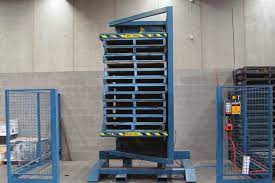
Let's break down the numbers with a more detailed look. This isn't just about abstract benefits; it's about concrete dollars and cents that impact your profit margin.
Quantifying Labor Savings
Manual pallet handling is incredibly inefficient. It often requires two workers and can take anywhere from 5 to 15 minutes per pallet, depending on the method used. Let's do some simple math. Assume you pay a worker $20/hour (including benefits). Two workers cost you $40/hour. If they spend 10 minutes flipping a pallet, that's a labor cost of about $6.67 per pallet. A pallet inverter, operated by one person, does the same job in one minute. The labor cost is about $0.33. If you flip 30 pallets per day, you're looking at a daily labor savings of around $190, which is over $47,000 per year for a single shift. I once worked with a company that ran three shifts. Their payback period on the machine from labor savings alone was less than a year.
The High Cost of Damaged Product
For PCB assembly, this is the biggest financial risk. A single pallet can hold tens or even hundreds of thousands of dollars worth of product. A manual flip gone wrong—a slip, a shift, a drop—can be a financial disaster. It's not just the cost of the damaged boards themselves. It's the cost of line stoppage, inspection, rework, and potential missed customer deadlines. Furthermore, manual handling increases the risk of Electrostatic Discharge (ESD) events, which can cause latent damage that doesn't show up until the product is in the field. An automated pallet inverter can be built with ESD-safe materials and grounding, enclosing the product in a controlled environment during the transfer. This eliminates both physical and electrical damage risks.
The Ripple Effect of Increased Throughput
A bottleneck doesn't just slow down one step; it slows down the entire line. Your multi-million dollar SMT machines might be capable of running at high speed, but if they have to wait for manually flipped pallets, their Overall Equipment Effectiveness (OEE) plummets. By automating the pallet rotation and cutting the time from 10 minutes to 1 minute, you reclaim 9 minutes of productive time for every pallet. This time ripples through the entire process, allowing you to increase the overall output of the line without adding any other equipment. This directly addresses goals like increasing capacity utilization.
| Cost Factor | Manual Handling (Per Year) | Automated Handling (Per Year) | Annual Savings |
|---|---|---|---|
| Labor | 2 workers, 30 pallets/day = $47,520 | 1 operator, minimal time = ~$2,500 | $45,020 |
| Product Damage | Assume 0.5% loss on $10M value = $50,000 | Effectively zero = $0 | $50,000 |
| Throughput Gain | N/A | Increased output value = $20,000+ | $20,000+ |
| Total Estimated Savings | ~$115,020 |
Can a pallet inverter integrate with existing MES and automated systems?
You're building a smart factory. You're investing in Manufacturing Execution Systems (MES) to track every product, using IoT sensors to monitor machine health, and leveraging data to make better decisions. The last thing you want is a new piece of equipment that is a "black box"—a machine that does its job but doesn't communicate with the rest of your digital ecosystem. This creates data gaps and prevents true end-to-end process visibility. A standalone machine is a liability in a connected factory. The good news is that modern automation equipment is built specifically to avoid this problem.
Yes, a modern pallet inverter is designed for full integration with MES, SCADA, and other factory automation systems. Through its onboard PLC and standard industrial communication protocols, it can send and receive data, allowing for real-time tracking, remote control, and data logging as part of a larger, connected digital strategy.
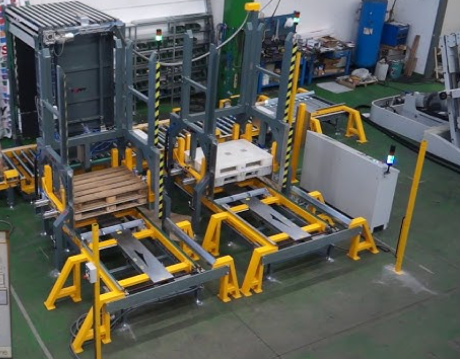
Let's dive deeper into what this integration actually looks like. It's about turning a mechanical workhorse into an intelligent node in your factory's network.
The PLC as the Communication Gateway
The brain of the pallet inverter is its PLC. This controller does more than just run the machine's sequence. It acts as the central hub for all communication. It receives start/stop commands from the main line controller, and it sends back status updates like "cycle complete," "machine in fault," or "ready for new pallet." This simple handshake is the foundation of physical integration, ensuring the inverter works in harmony with upstream and downstream conveyors and AGVs. When I help clients spec out a machine, the first question I ask is, "What PLC platform does your factory use?" Ensuring compatibility (e.g., Siemens, Allen-Bradley) from the start makes integration ten times easier.
Speaking the Language of the Factory: Industrial Protocols
For deeper integration with software like an MES, the inverter needs to speak the right language. This is where industrial communication protocols come in. Think of them like network languages for machines. Common protocols include:
- EtherNet/IP: Widely used, especially with Rockwell/Allen-Bradley PLCs.
- PROFINET: A standard for Siemens-based automation.
- OPC-UA: A more modern, platform-independent protocol that is excellent for secure communication between machines and enterprise-level software.
When an inverter supports these protocols, your MES can directly query it for information. It can pull data on cycle times, track the pallet ID being processed, and log any error codes. This means your digital record of the product's journey is complete, with no black holes.
Data for Predictive Maintenance and Analytics
An integrated pallet inverter is a valuable source of data for your digital transformation goals. By tracking its own performance, it provides the raw material for advanced analytics.
- Cycle Count: How many pallets has it flipped today? This week? This year? This helps schedule preventative maintenance.
- Motor Current Draw: A gradual increase in motor current could signal mechanical wear or a problem with the bearings, allowing you to fix it before it fails.
- Fault History: Which errors occur most frequently? This can help diagnose underlying issues.
This data feeds directly into a predictive maintenance program, helping you move from a "fix it when it breaks" model to a "fix it before it breaks" model, a key step in achieving high equipment uptime.
| Integration Level | Description | Key Technology | Value to Your Operation |
|---|---|---|---|
| Level 1: Physical Handshake | Basic start/stop coordination with conveyors. | Digital I/O, Relays | Prevents collisions, enables basic automation. |
| Level 2: PLC Communication | Inverter PLC talks to the main line controller. | EtherNet/IP, PROFINET | Coordinated sequences, fault sharing. |
| Level 3: MES/SCADA Data | Machine data is sent to factory software. | OPC-UA, SQL Database | Full product traceability, OEE calculation. |
| Level 4: IoT & Analytics | Data is used for predictive maintenance. | Cloud connectivity, sensors | Increased uptime, lower maintenance costs. |
What are the safety and ergonomic benefits of replacing manual pallet handling?
The most important asset in any factory isn't the machinery; it's the people who run it. Manual pallet handling is one of the highest-risk activities on a production floor. It involves lifting, twisting, and bending with heavy, awkward loads—a perfect recipe for musculoskeletal disorders (MSDs) like back strains and shoulder injuries. The cost of a single serious injury, including medical bills, lost time, and insurance premium hikes, can easily exceed the cost of the equipment that would have prevented it. This is a risk that pragmatic leaders work tirelessly to engineer out of their processes.
The single greatest safety benefit of a pallet inverter is the complete elimination of manual lifting and twisting associated with rotating a load. This drastically reduces the risk of MSDs, which are among the most common and costly workplace injuries. It replaces a high-risk manual task with a safe, guarded, and fully automated process.
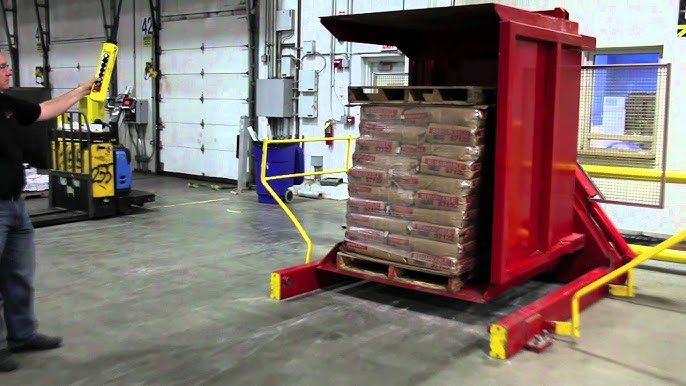
The benefits go far beyond just preventing back injuries. Creating a safer work environment has a positive effect on morale, productivity, and your company's reputation. Let's explore the specific ways this technology transforms workplace safety.
Eradicating the Root Cause of MSDs
The science of ergonomics is clear: the human body is not designed to function as a crane or a turntable. When a worker has to bend at the waist to lift a heavy box from the bottom of a pallet or twist their torso while carrying a load, it puts immense strain on the lumbar spine. A pallet inverter or pallet changer that presents the load at a comfortable, ergonomic height allows workers to handle individual boxes with a proper "power lift" technique (using their legs, not their back). The inverter itself does all the heavy lifting and rotating. By designing the hazardous movements out of the job, you aren't just reducing risk; you are eliminating it. I’ve spoken with so many floor managers who tell me their injury reports for that section of the plant went to zero after installing this type of equipment.
A Fortress of Safety: Guards, Sensors, and Interlocks
A well-designed pallet inverter is surrounded by safety features. It's not just an open machine. Standard practice, and often a legal requirement, is to enclose the operating area with safety fencing. Access to this area is controlled by a gate with a safety interlock switch, which immediately stops the machine if the gate is opened during a cycle. Furthermore, light curtains are often used at the loading and unloading points. These invisible infrared beams create a protective field; if anything (a person, a forklift) breaks the beam while the machine is in motion, it triggers an immediate emergency stop. This multi-layered approach ensures that the machine's power and movement are fully contained, protecting everyone in the vicinity.
Creating a More Organized and Efficient Workspace
Manual pallet flipping is messy. It requires a large, open area of the floor where workers can lay down pallets, re-stack boxes, and maneuver. This clutters the workspace, impedes forklift traffic, and creates trip hazards. An automated pallet inverter has a compact, defined footprint. The entire process happens within its safety-fenced cell. This frees up valuable floor space and allows for more organized, clearly defined traffic lanes for people and vehicles. A less cluttered workspace is inherently a safer workspace.
| Hazard Type | Manual Pallet Handling | With Automated Pallet Inverter |
|---|---|---|
| Ergonomic | High risk of back/shoulder injury from lifting & twisting. | Eliminated. Machine does all heavy work. |
| Impact/Crush | Risk of dropping load on feet or hands. | Contained. Load is securely clamped within a guarded cell. |
| Traffic | Requires large, cluttered floor space, blocking aisles. | Minimized. Compact, defined footprint improves workflow. |
| Human Error | Forgetting a step, unstable stacking, rushing. | Automated. PLC runs a consistent, tested, safe sequence every time. |
My Insights
I've spent my entire career in the packing and material handling industry. I started on the floor as an engineer, learning how these machines work, and eventually built my own company, SHJLPACK. Along the way, I achieved financial independence, and I saw many of my clients grow their businesses by making smart investments in automation. Now, I want to share what I’ve learned.
When we talk about a pallet inverter for PCBs, the conversation is really about a universal principle: how to handle a large, unitized load safely and efficiently. The product itself—whether it's a box of electronics, a stack of paper, or a bag of chemicals—is secondary. The core challenge is the same. I've worked with leaders across many industries, from food processing to heavy manufacturing. People like Javier Morales, a steel mill owner I know in Mexico, face these same fundamental questions, just on a different scale.
Javier runs a massive steel mill. He deals with challenges like fluctuating energy costs, aging equipment, and immense pressure to improve efficiency and safety. When he hears "PCB assembly," it might not seem relevant. But when I talk to him, I don't talk about electronics. I talk about principles.
I ask him, "How do you handle your steel coils? Do you ever need to change their orientation from 'eye to the sky' to 'eye to the wall' to feed a slitting line?" Of course, they do. For that, they use a machine called a coil upender or tilter. It works on the exact same principle as a pallet inverter: clamp, rotate, release. It's just built to handle a 20-ton coil of steel instead of a 1-ton pallet of electronics. By automating this, he can reduce his reliance on a slow overhead crane (his "aging equipment"), improve safety for his crew, and feed his production line faster, which helps him reach his goal of 95% capacity utilization.
I also ask him, "When you have a stack of finished steel plates on a wooden shipping pallet, do you ever need to transfer them to a more durable in-house steel pallet for transport?" He does. A heavy-duty pallet inverter can do that in 60 seconds, eliminating a risky, time-consuming manual process. This directly attacks his goal of reducing operational costs by 8%.
This is what I mean by providing a "TOTAL SOLUTION." It's not about selling one machine. It's about understanding the client's core problem and showing them how a proven engineering principle can be applied to solve it. Whether you are handling fragile circuits or rugged steel, the goals of increasing throughput, reducing costs, improving safety, and enabling digital transformation are universal. The pallet inverter is just one tool, but the thinking behind it—automating a dangerous, inefficient, manual task—is a strategy that builds successful, resilient businesses.
Conclusion
Automating pallet rotation with an inverter boosts safety and efficiency. This core principle scales across all industries, turning a simple machine into a powerful strategic asset for any modern factory.

